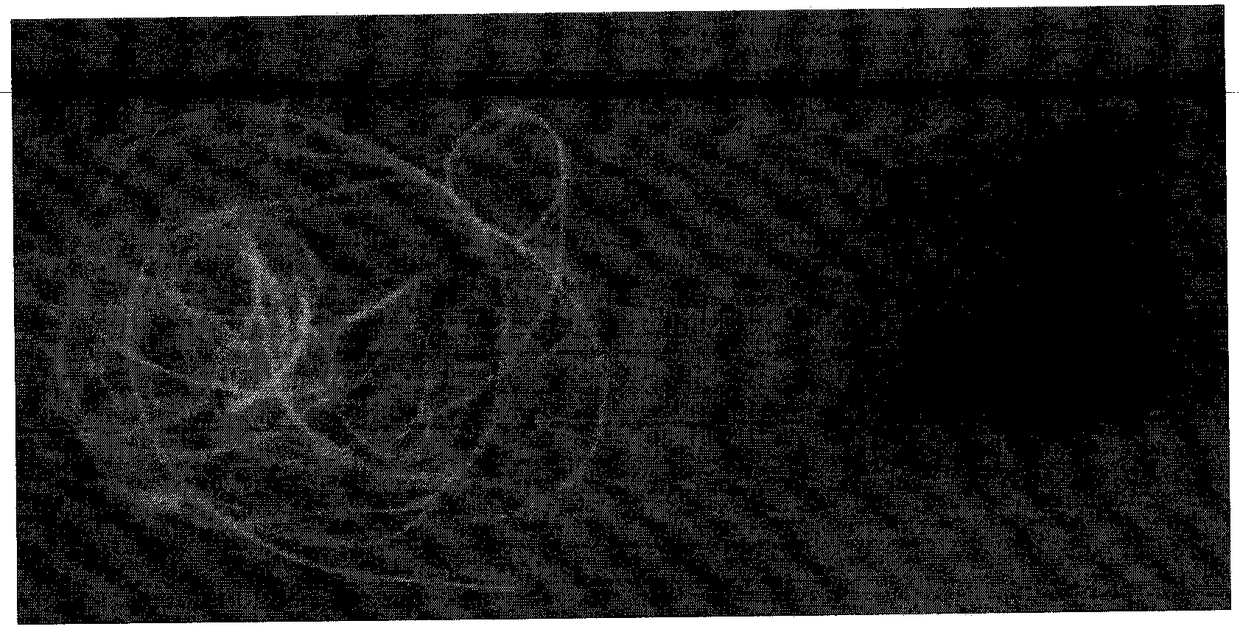Preparation method of polyamide 6/perylene tetracarboxylic dianhydride colored nano-fibers
A technology of perylenetetracarboxylic dianhydride and nanofibers, which is applied in the field of preparation of colored nanofibers of polyamide 6/perylenetetracarboxylic dianhydride, which can solve the problems of high color fixing costs, color shifts, streaks, etc., and improve acid resistance , High tensile strength, simple preparation process
- Summary
- Abstract
- Description
- Claims
- Application Information
AI Technical Summary
Problems solved by technology
Method used
Image
Examples
preparation example Construction
[0024] A preparation method of polyamide 6 / perylenetetracarboxylic dianhydride colored nanofibers is characterized in that it comprises the following preparation steps:
[0025] Step 1. Weigh caprolactam, 6-aminocaproic acid, manganese chloride (0.001-0.005g), perylenetetracarboxylic dianhydride, and hypophosphorous acid (0.0025-0.0075g) into a four-necked flask, open the condensed water, and start Infuse nitrogen for 5 minutes, then heat it to melt and start stirring under nitrogen protection atmosphere, heat, and the medicine begins to melt, increase the voltage by one step every 10-20 minutes, continue to increase the temperature, constant temperature reaction 2-3 hours, then gradually raise the temperature to 250-270°C, and react at a constant temperature for 4-5h. After the reaction, pour the polymer out of the reaction vessel to obtain polyamide 6 / perylenetetracarboxylic dianhydride polymer, and turn off the nitrogen and cold water;
[0026] Step 2. Weigh the polyamide ...
Embodiment 1
[0035] (1) Preparation of polyamide 6 / perylenetetracarboxylic dianhydride polymer:
[0036] Weigh caprolactam 36g, 6-aminocaproic acid 4g, manganese chloride (0.001g), perylenetetracarboxylic dianhydride 0.4g, hypophosphorous acid (0.0025g) and add in the four-necked flask, open the condensed water, start feeding nitrogen 5 Minutes, then under nitrogen protection atmosphere, heat it to melt and start to stir, heat, the medicine starts to melt, increase the voltage by a small grid every 10 minutes, continue to increase the temperature, the constant temperature reaction time can be 2.5 hours, and then Gradually raise the temperature to 260° C., and react at a constant temperature for 4.5 hours. After the reaction, pour the polymer out of the reaction vessel to obtain a polyamide 6 / perylenetetracarboxylic dianhydride polymer, and turn off nitrogen and cold water.
[0037] (2) Preparation of polyamide 6 / perylenetetracarboxylic dianhydride spinning solution:
[0038] Weigh 15 g of...
Embodiment 2
[0042] (1) Preparation of polyamide 6 / perylenetetracarboxylic dianhydride polymer:
[0043] Weigh 18g of caprolactam and 2g of 6-aminocaproic acid, add them into a four-necked flask, open the condensed water, and start feeding nitrogen gas for 4 minutes, then heat it to melt and start stirring under nitrogen protection atmosphere, after stirring for half an hour, Add 0.2 g of perylene tetracarboxylic dianhydride at this time, continue heating, heat to 180° C. with a heating mantle and keep the temperature for 1 hour, then heat the temperature to 260° C., and keep the temperature for 6 hours to obtain polyamide 6 / perylene tetracarboxylic acid dianhydride. Formic dianhydride polymer, turn off nitrogen and cold water.
[0044] (2) Preparation of polyamide 6 / perylenetetracarboxylic dianhydride spinning solution:
[0045] Weigh 10 g of polyamide 6 / perylenetetracarboxylic dianhydride polymer, add 15 g of formic acid solution, put a rotor into the solution at the same time, stir on ...
PUM
 Login to View More
Login to View More Abstract
Description
Claims
Application Information
 Login to View More
Login to View More - R&D
- Intellectual Property
- Life Sciences
- Materials
- Tech Scout
- Unparalleled Data Quality
- Higher Quality Content
- 60% Fewer Hallucinations
Browse by: Latest US Patents, China's latest patents, Technical Efficacy Thesaurus, Application Domain, Technology Topic, Popular Technical Reports.
© 2025 PatSnap. All rights reserved.Legal|Privacy policy|Modern Slavery Act Transparency Statement|Sitemap|About US| Contact US: help@patsnap.com

